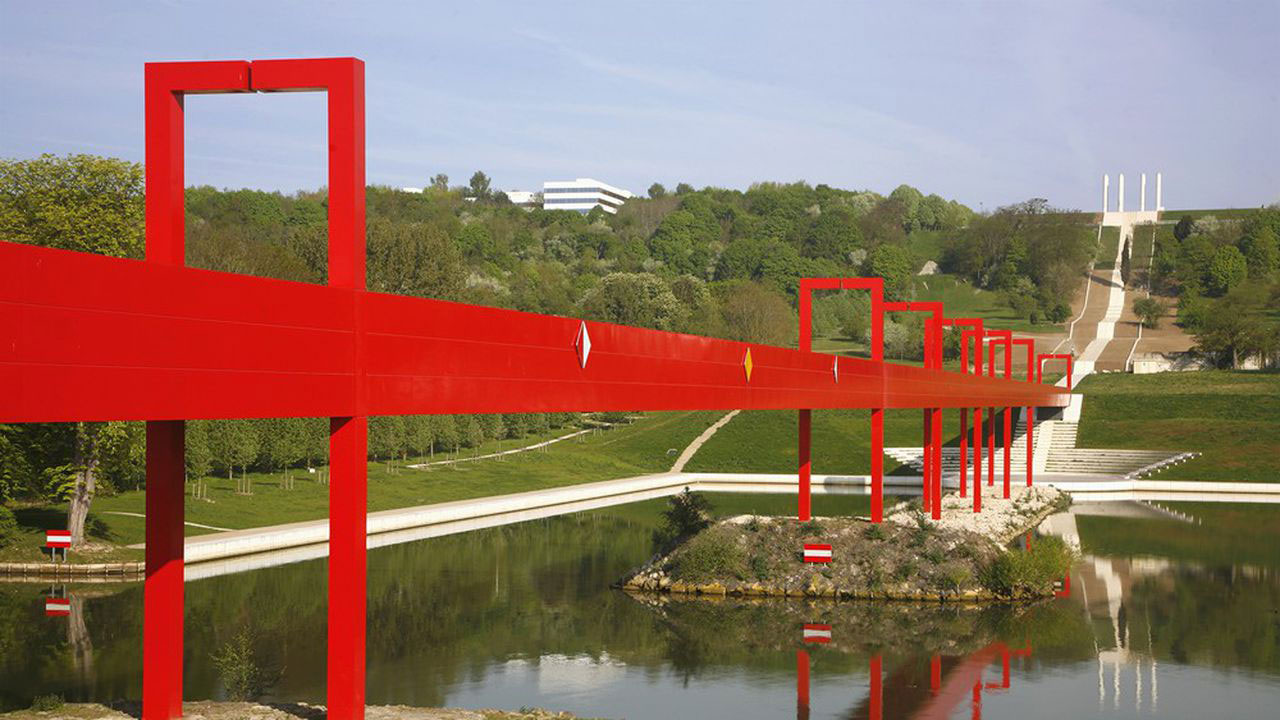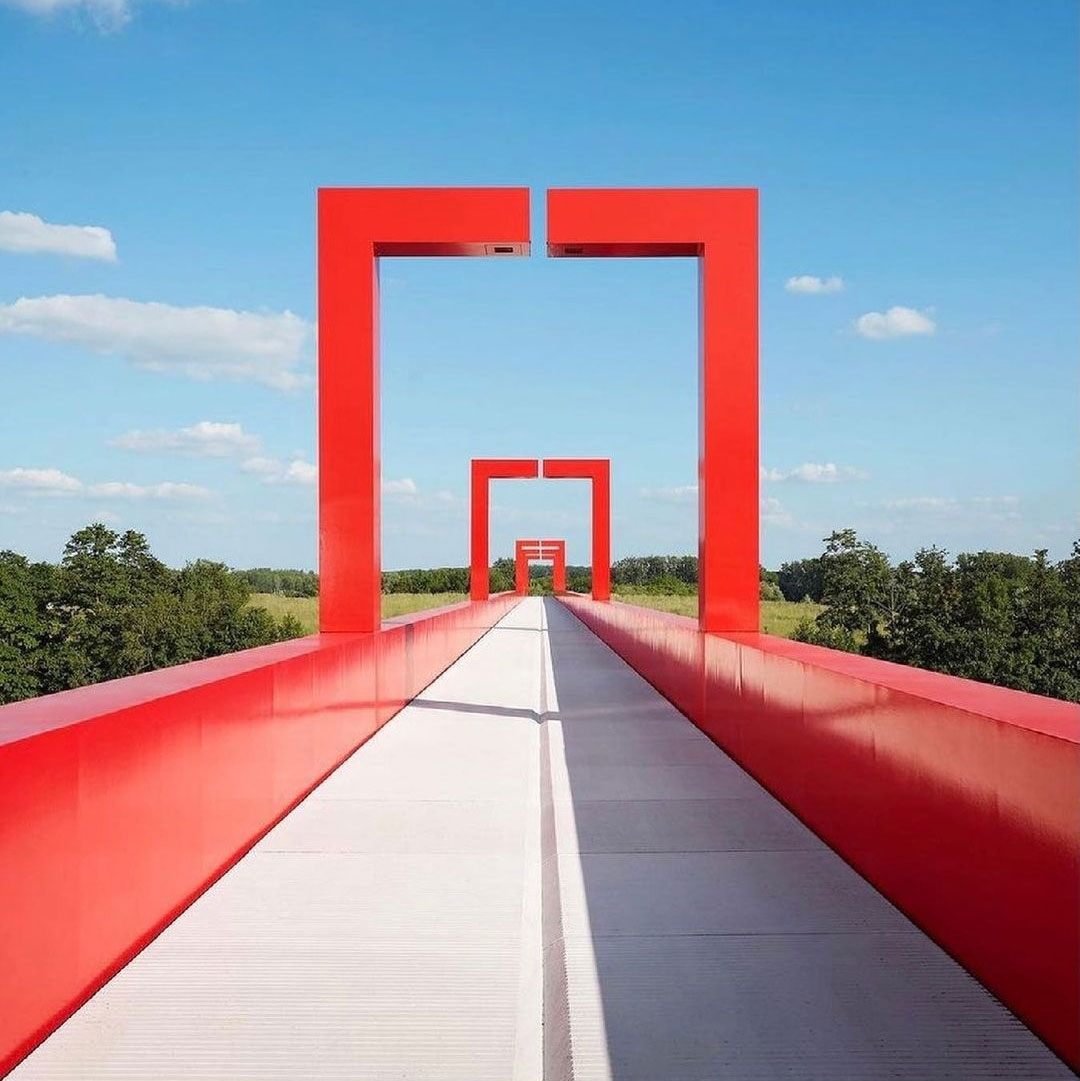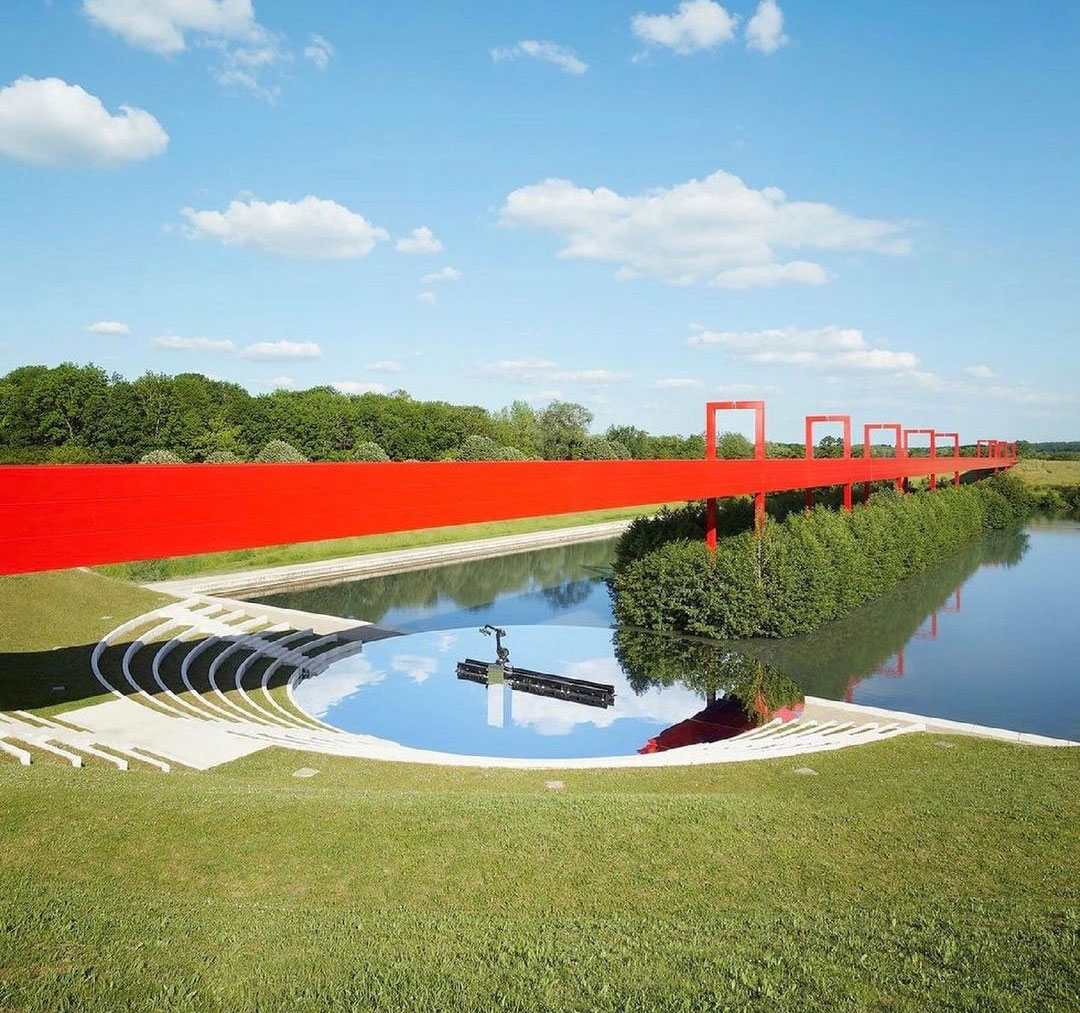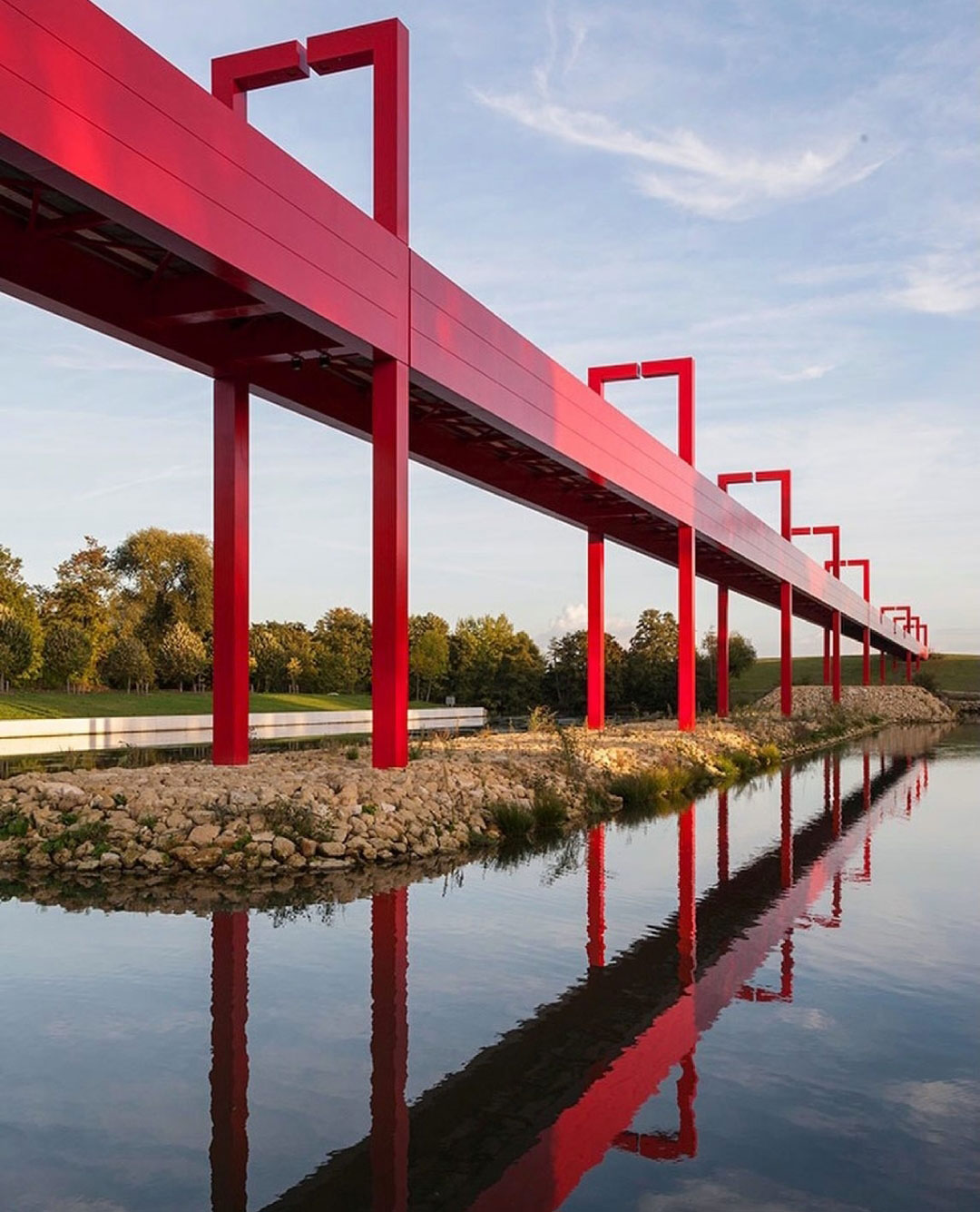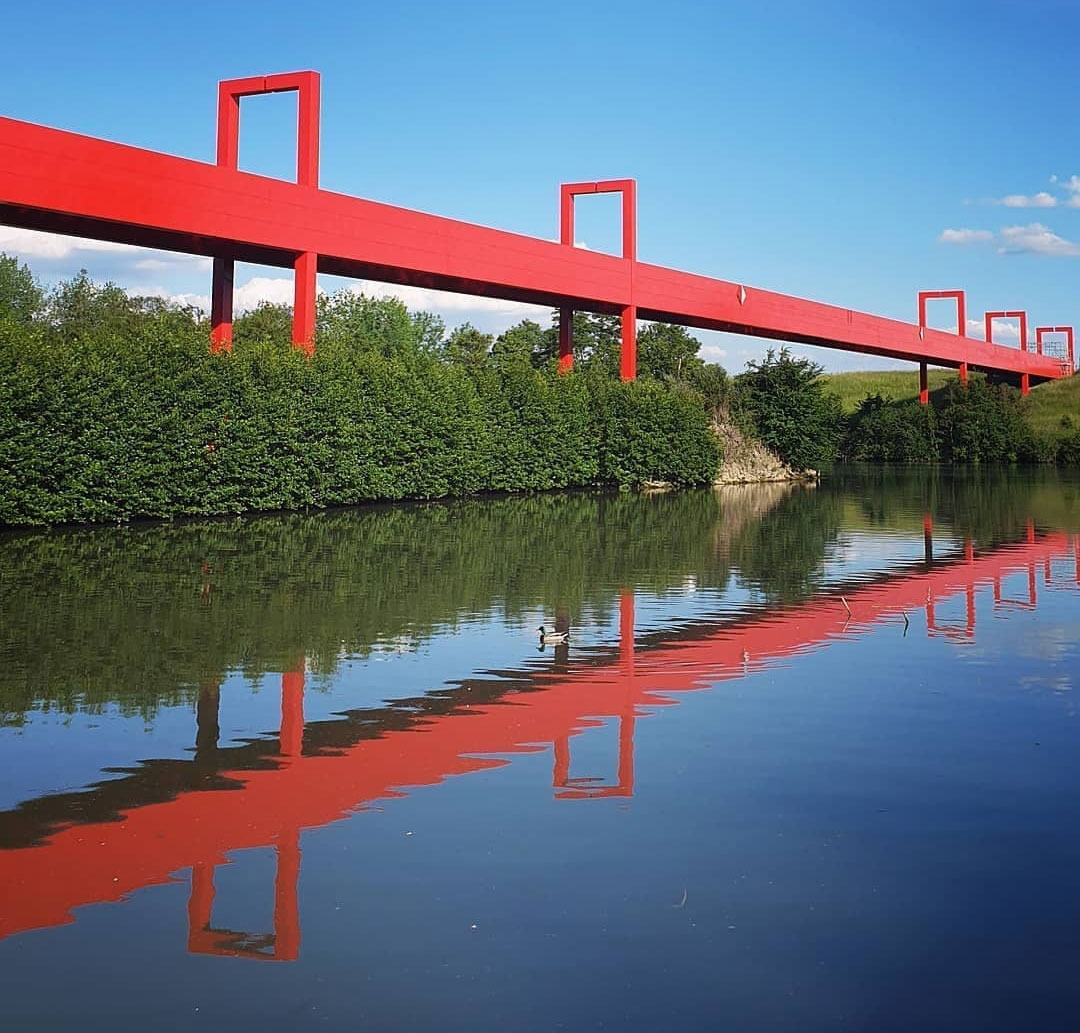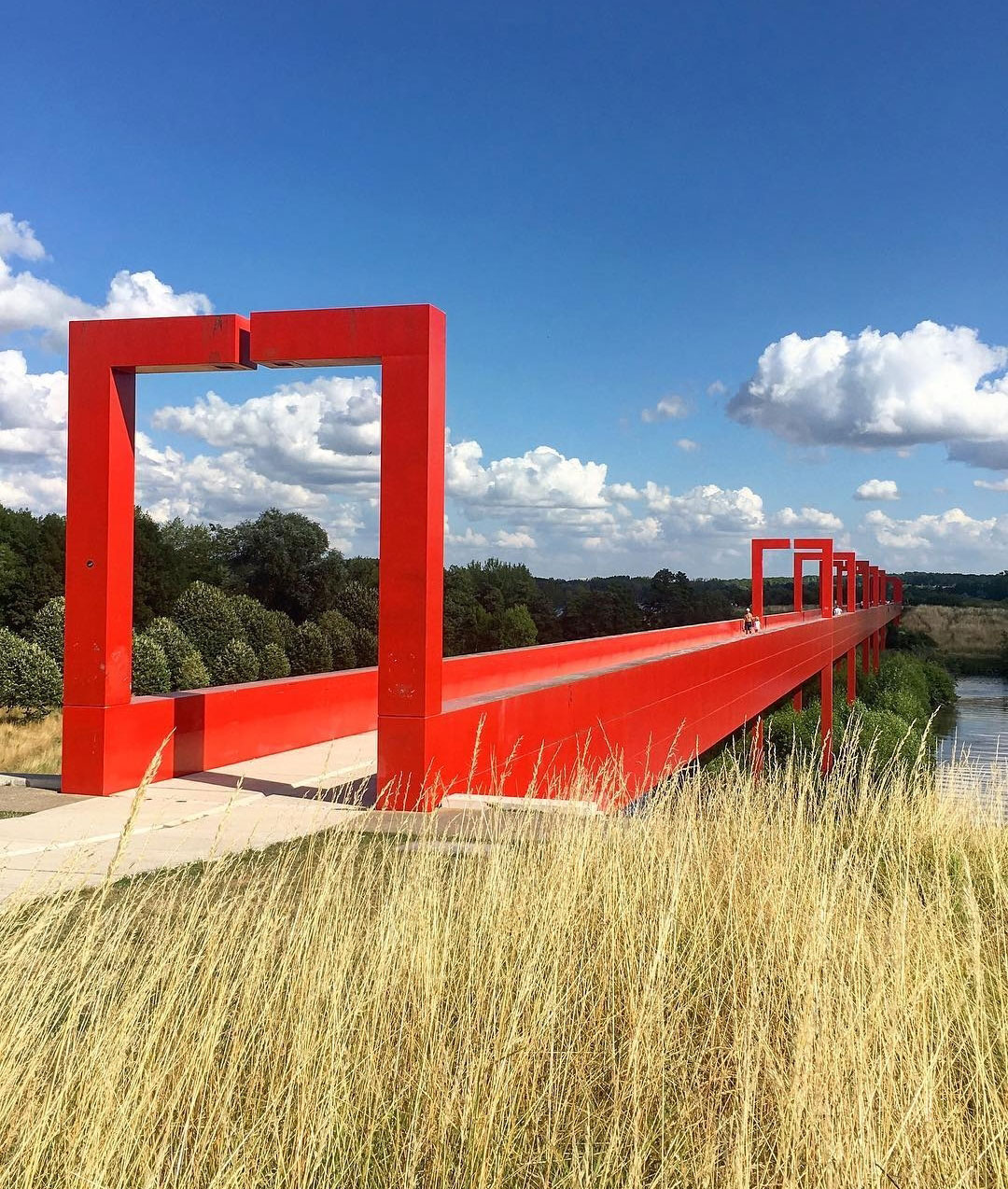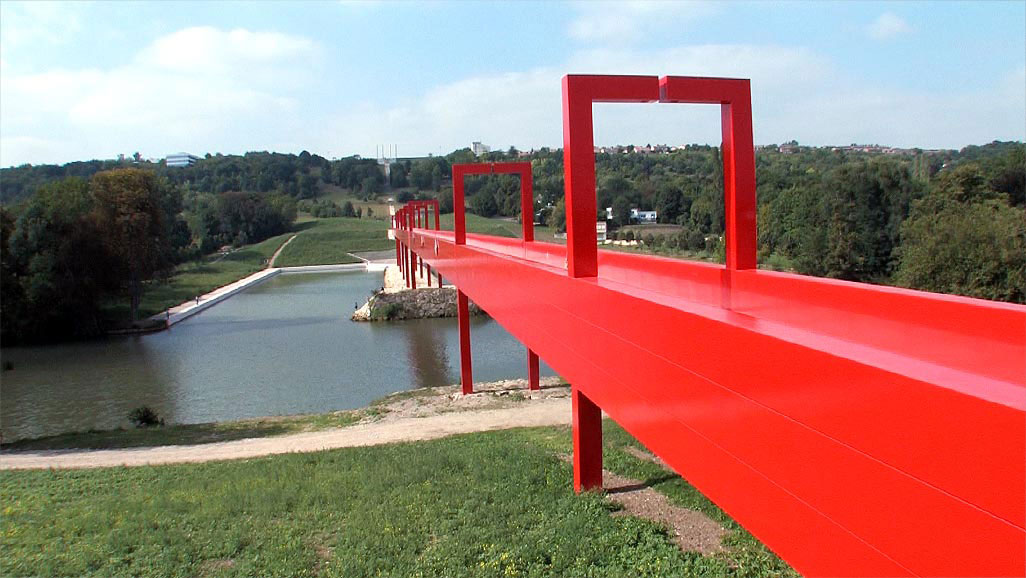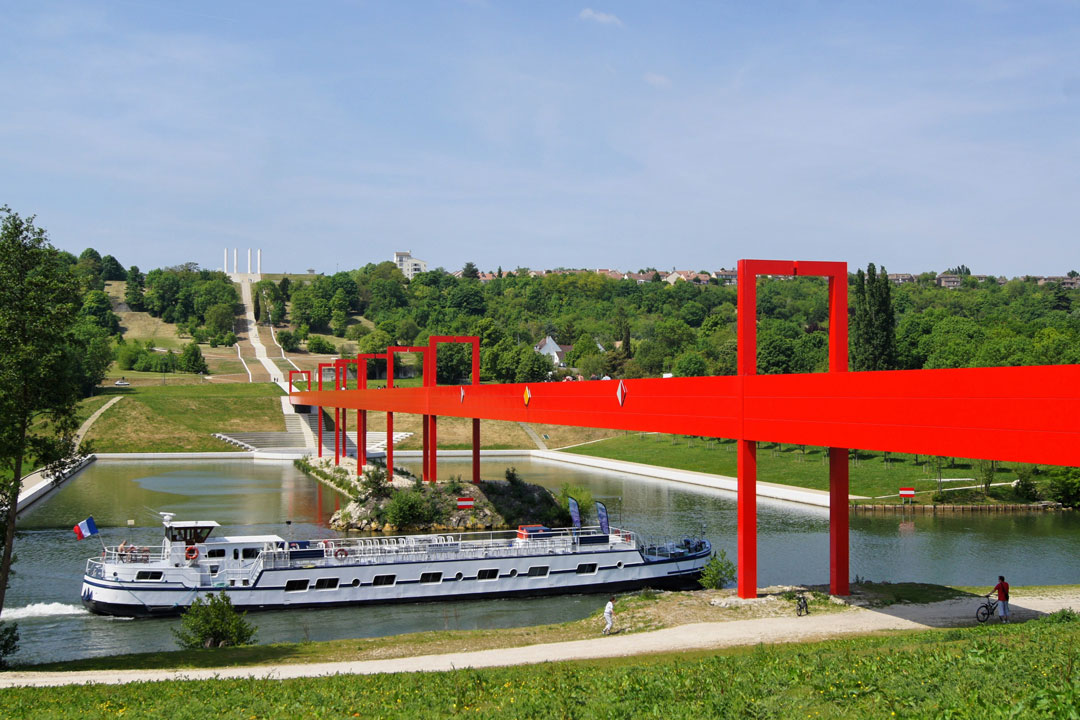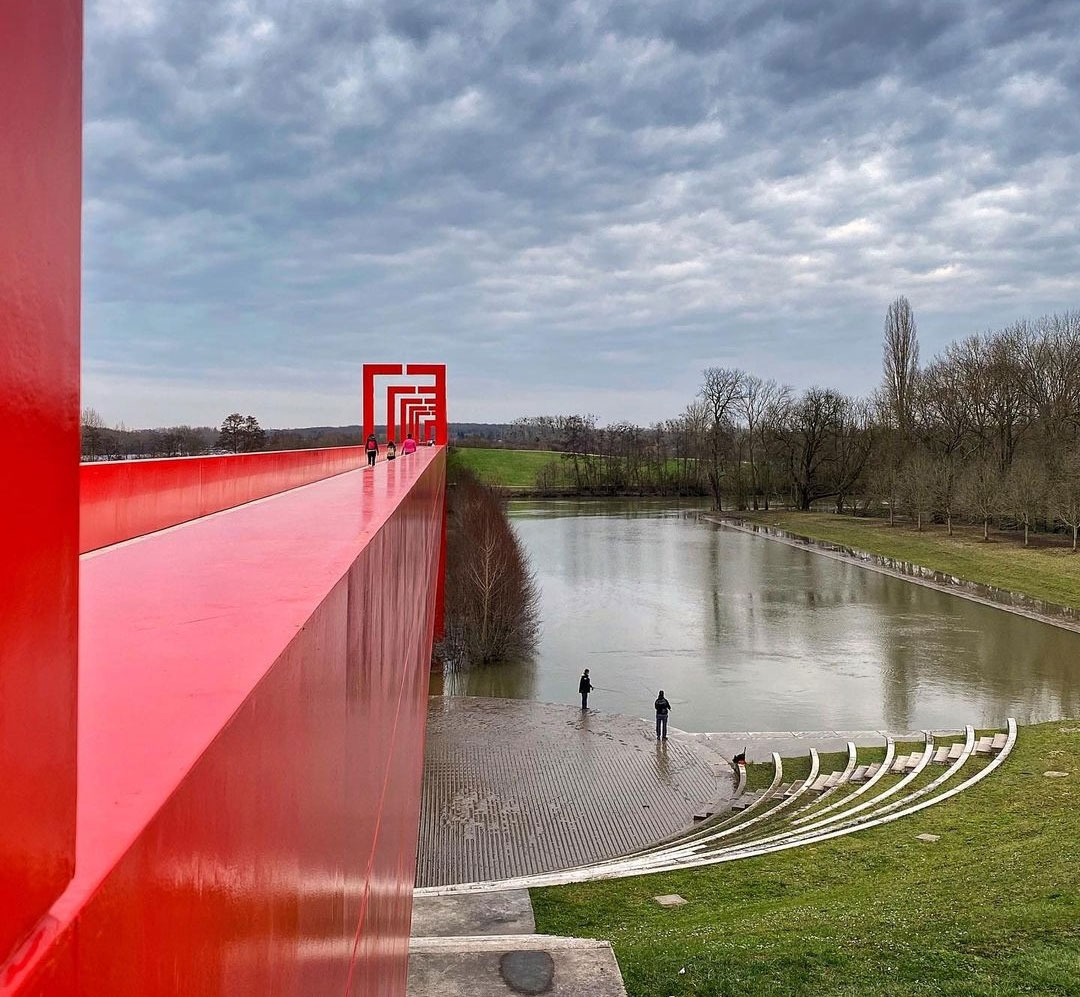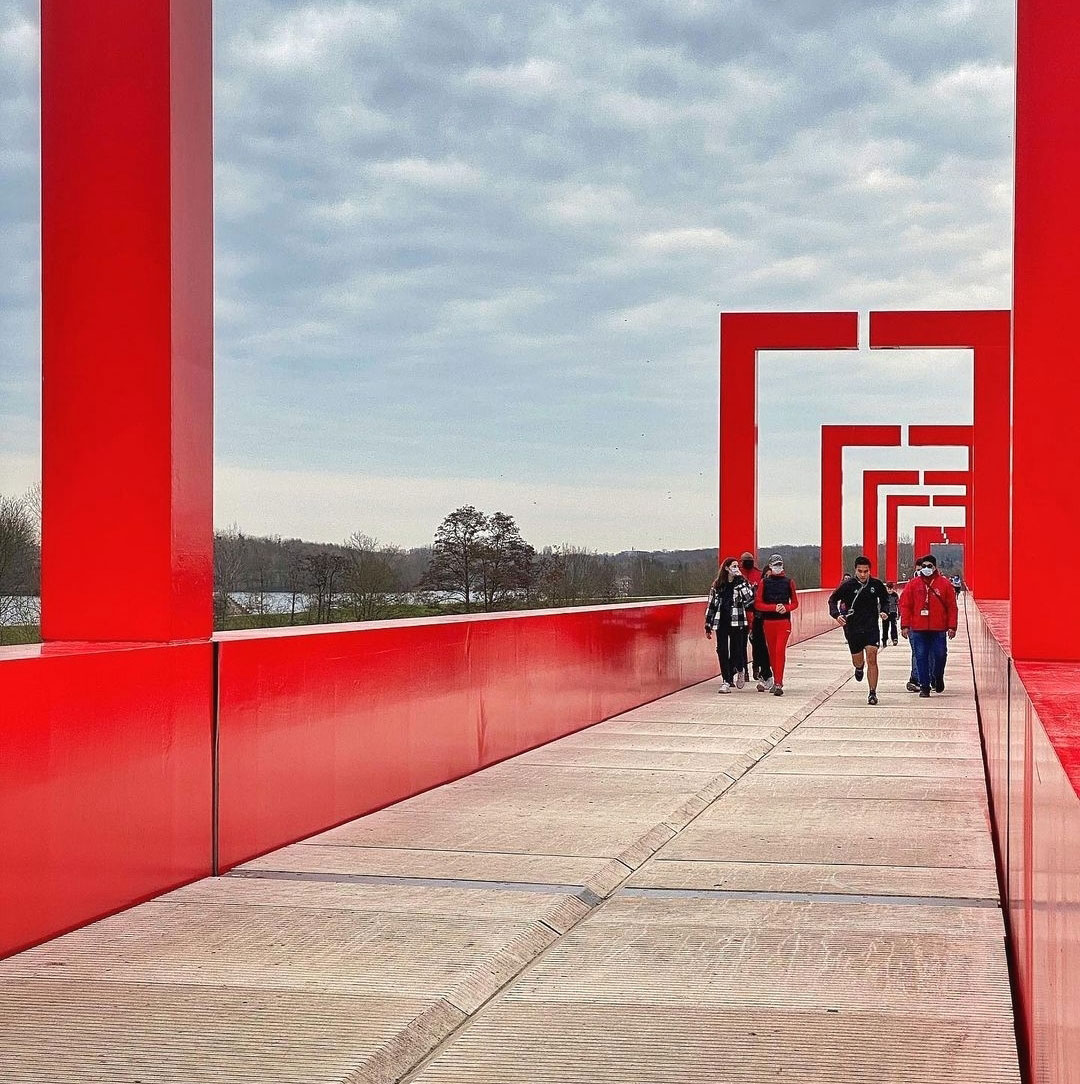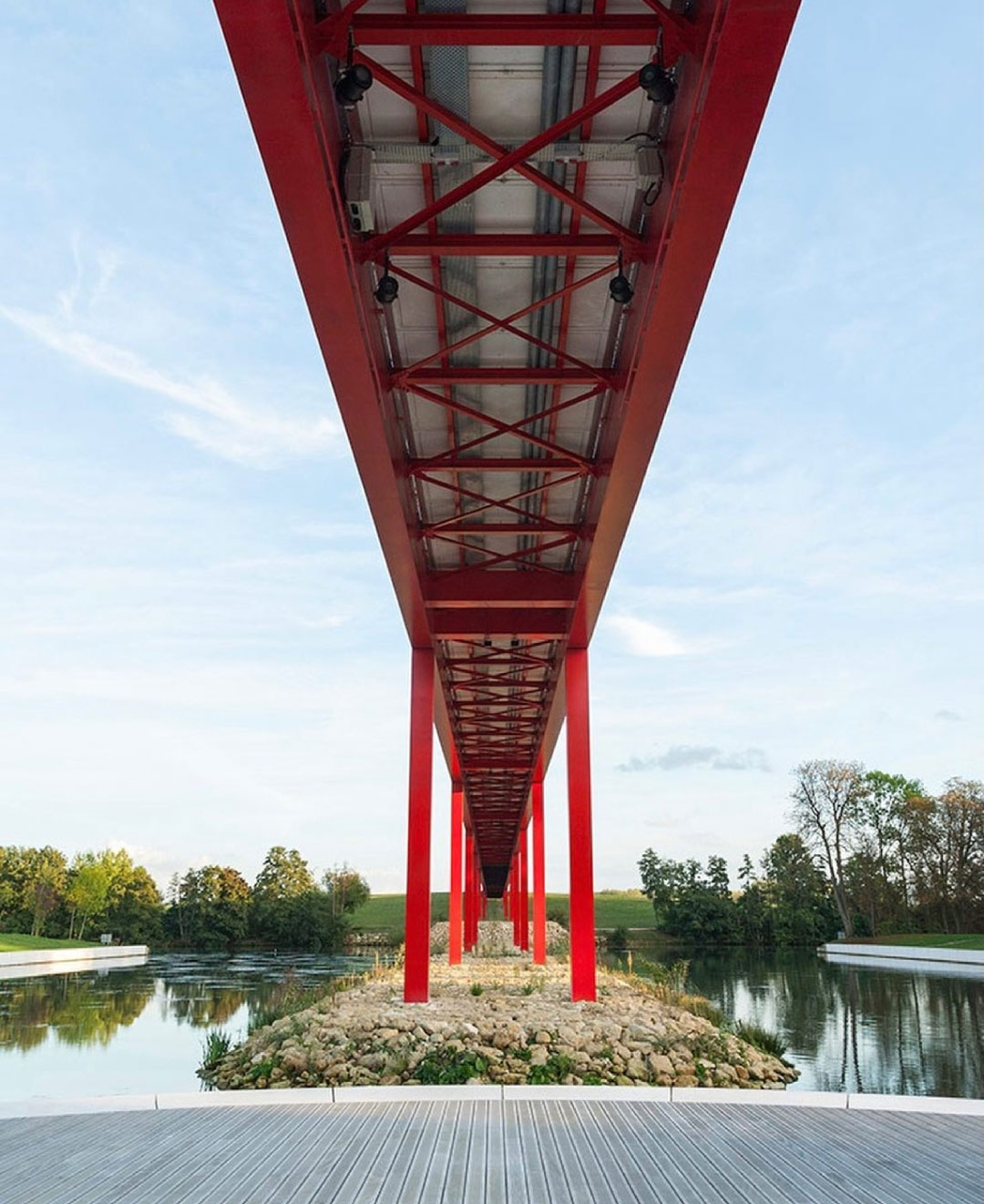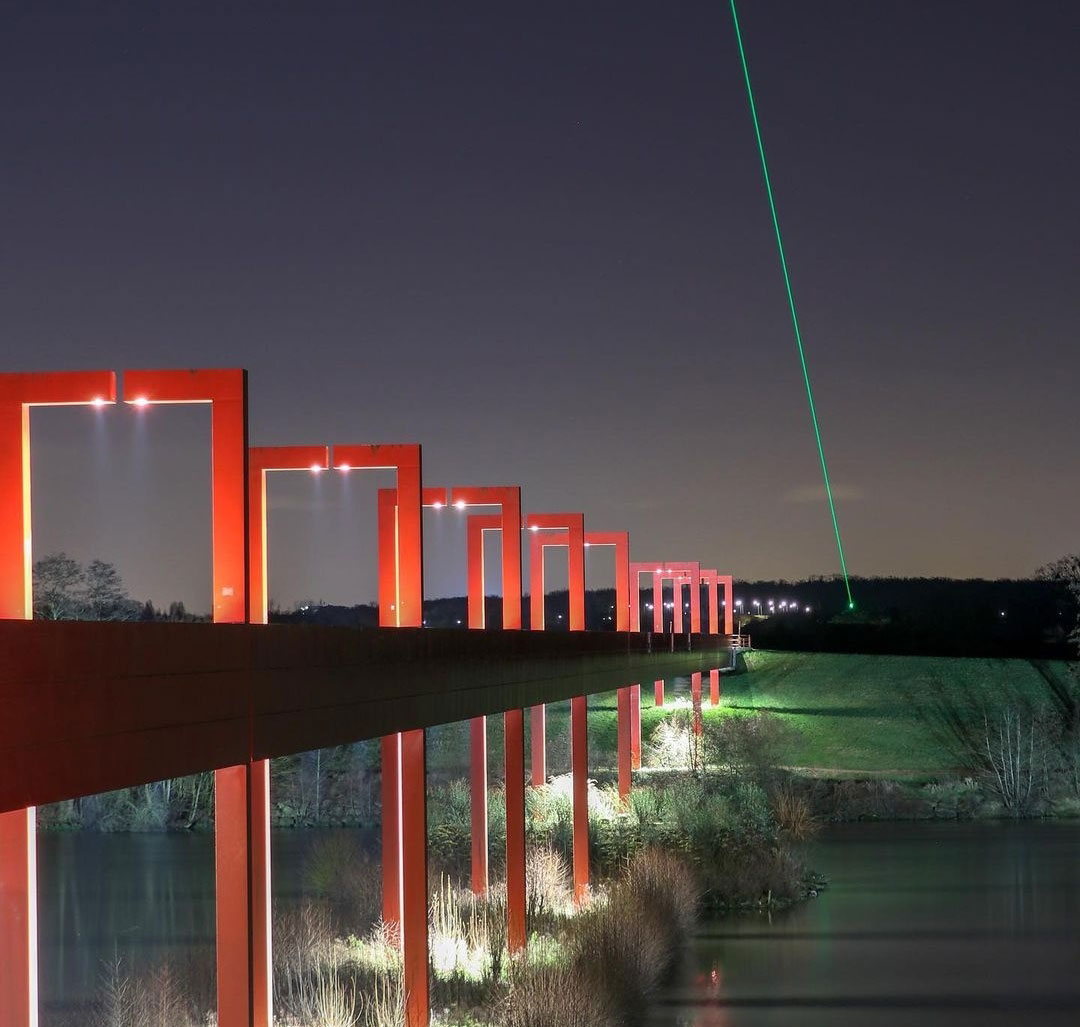TRA ARTE E URBANISTICA
LANDSCAPE | CERGY-PONTOISE
L’Axe Majeur di Cergy-Pointoise, città a nord-ovest di Parigi, è un tracciato ciclopedonale che trae inizio dal quartiere residenziale progettato da Ricardo Bofill e orientato (topograficamentre e visivamente) alla capitale. L’intero complesso costituisce una delle espressioni più evidenti dell’urbanistica postmoderna, in cui il linguaggio architettonico rispecchia le forme dell’urbanistica e del disegno del paesaggio francesi dell’età barocca.
A tutt’oggi quel percorso rettilineo rappresenta un intervento assai incisivo in termini di landscape design. Dopo aver attraversato l’esedra, un parco, un’esplanade, un’installazione a 12 colonne e un altro parco, l’Axe scavalca il fiume Oise mediante una passerella rossa, costruita a partire dal 1980 in Val-d’Oise su progetto dell’artista israeliano Dani Caravan.
Concepito come un ponte sia letterale che figurato, inquadra sia il paesaggio naturale che gli elementi artificiali grazie anche all’uso del colore rosso nella versione più brillante, che riveste i parapetti e le grandi cornici distribuite in tutta la sua lunghezza.
Between art and urbanism – The Axe Majeur in Cergy-Pointoise, a city north-west of Paris, is a cycle/pedestrian path that starts from the residential district designed by Ricardo Bofill and oriented (topographically and visually) to the capital. The entire complex constitutes one of the most evident expressions of postmodern urbanism, in which the architectural language reflects the forms of French urban planning and landscape design of the Baroque age.
To this day, that straight path represents a very incisive intervention in terms of landscape design. After crossing the exedra, a park, an esplanade, an installation with 12 columns and another park, the Axe crosses the river Oise by means of a red footbridge, built starting in 1980 in Val-d’Oise on a project by the Israeli artist Dani Caravan.
Conceived as a bridge both literal and figurative, it frames both the natural landscape and the artificial elements thanks also to the use of red in the brightest version, which covers the parapets and large frames distributed throughout its length.

